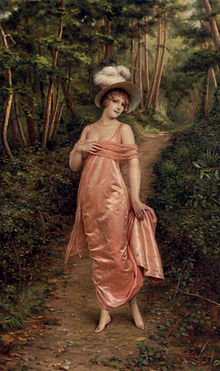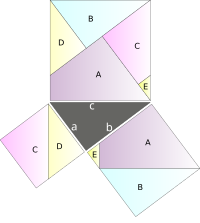Elegance


Elegance is beauty that shows unusual effectiveness and simplicity.
Elegance is frequently used as a standard of tastefulness, particularly in visual design, decorative arts, literature, science, and the aesthetics of mathematics.
Elegant things often exhibit refined grace and suggest maturity, and in the case of mathematics, a deep understanding into the subject matter.[1][2]
General concept
Essential components of the concept include simplicity and consistency of design, focusing on the essential features of an object. In art of any kind one might also require dignified grace, or restrained beauty of style.
Visual stimuli are frequently considered elegant, if a small number of colors and stimuli are used, emphasizing the remainder.[3]
In philosophy of science
In the philosophy of science, there are two concepts referring to two aspects of simplicity: elegance (syntactic simplicity), which means the number and complexity of hypotheses, and parsimony (ontological simplicity), which is the number and complexity of things postulated.[4]
In mathematics
In mathematical problem solving, the solution to a problem (such as a proof of a mathematical theorem) exhibits mathematical elegance if it is surprisingly simple and insightful yet effective and constructive. Such solutions might involve a minimal amount of assumptions and computations, while outlining an approach that is highly generalizable.[1] Similarly, a computer program or algorithm is elegant if it uses a small amount of code to great effect.[5][6]
In engineering
In engineering, a solution may be considered elegant if it uses a non-obvious method to produce a solution which is highly effective and simple. An elegant solution may solve multiple problems at once, especially problems that are not thought to be inter-related.[7] Elegance can arguably be measured for engineering problems as the ratio of problem complexity to that of solution complexity.[8] Thus a simple (low complexity) solution to a problem of high complexity is seen as elegant. This measure does not advise of process to produce elegant solutions, and is merely a way of comparing between multiple solutions for elegance assessment.
In chemistry
In chemistry, chemists might look for elegance in theory, method, technique and procedure. For example, elegance might comprise creative parsimony and versatility in the utilization of resources, in the manipulation of materials, and in the effectiveness in syntheses and analysis.
In pharmacy
In pharmacy, elegance in formulation is important for quality as well as for effectiveness in dosage form design, a major component of pharmaceutics.
References
- ^ a b "The Definitive Glossary of Higher Mathematical Jargon — Elegance". Math Vault. 2019-08-01. Retrieved 2019-11-20.
{{cite web}}: CS1 maint: url-status (link) - ^ "Definition of ELEGANCE". www.merriam-webster.com. Retrieved 2019-11-20.
- ^ Walden, Stephanie. "The Elements of Elegance: What Makes Design 'Sophisticated'?". Mashable. Retrieved 2019-11-20.
- ^ Stanford Encyclopedia of Philosophy entry
- ^ Perrin, Chad (16 August 2006). "ITLOG Import: Elegance". Chad Perrin: SOB.
- ^ Spolsky, Joel (15 December 2006). "Elegance". Joel on Software.
- ^ Zeldes, Nathan (2007). "Ingenious simplicity". Nathan's Possibly Interesting Web Site. Retrieved 11 October 2011.
- ^ Efatmaneshnik, Mahmoud; Ryan, Mike (2019), "On the Definitions of Sufficiency and Elegance in Systems Design", IEEE Systems Journal, 13 (3): 2077–2088, doi:10.1109/JSYST.2018.2875152
Further reading
- Schiro, Anne-Marie (30 August 1988). "For Galanos, Elegance Is Eternal". The New York Times.
